How to Paint with Gouache: Beginner's Guide
Welcome to the vibrant world of gouache painting! If you're a beginner, you're in for a treat. Gouache is not just any medium; it’s a delightful blend of watercolor and acrylic, offering the best of both worlds. Imagine the fluidity of watercolors combined with the opacity of acrylics. This guide is designed to introduce you to the essentials of gouache, from understanding its unique characteristics to mastering basic techniques that will allow your creativity to flow freely.
What makes gouache so special? For starters, its opaque nature allows for vibrant colors that can be layered and manipulated easily. Unlike watercolors, which can often appear translucent, gouache provides a rich, matte finish that can make your artwork pop. Whether you're painting landscapes, portraits, or abstract designs, gouache gives you the flexibility to create stunning effects that can captivate any viewer. So, grab your brushes and let’s dive into the colorful journey of gouache painting!
Gouache is a versatile medium that combines the properties of watercolor and acrylic. It is a water-based paint that dries to a matte finish, making it ideal for artists looking for vibrant colors without the shine that comes with acrylics. The unique characteristics of gouache allow for a variety of techniques, making it suitable for both beginners and experienced artists alike. You can use it straight from the tube for bold, saturated colors or dilute it with water for a more watercolor-like effect.
One of the main advantages of gouache is its reworkability. If you make a mistake, don’t worry! You can easily lift the paint off the paper with a damp brush or cloth, allowing you to correct any errors without starting over. This quality makes gouache an excellent choice for those who may be apprehensive about making mistakes. So, embrace the freedom that gouache offers and let your creativity shine!
Before you start your gouache painting journey, it's crucial to gather the right materials. Having the proper tools can make a significant difference in your painting experience. Here’s a quick rundown of what you’ll need:
- Gouache Paints: Choose high-quality paints that suit your style.
- Brushes: A variety of brushes will help you achieve different effects.
- Paper: The right paper can enhance your artwork.
- Palette: For mixing colors.
- Water Container: To rinse your brushes and dilute the paint.
- Paper Towels: For quick clean-ups and drying brushes.
With these materials in hand, you're ready to explore the wonderful world of gouache painting. Remember, the quality of your materials can greatly affect the outcome of your artwork, so invest in good supplies when possible.
Mastering foundational techniques is key to successful gouache painting. As a beginner, you'll want to start with the basics: layering, blending, and glazing. These techniques will help you build depth and dimension in your artwork.
Layering is a fundamental technique in gouache painting. It involves applying multiple layers of paint to create depth and richness in your artwork. Start by applying a base layer of color and let it dry. Once dry, you can add additional layers to enhance the vibrancy and complexity of your piece. Think of layering like building a cake; each layer adds to the overall flavor and texture!
Blending colors and glazing can create stunning effects in your gouache paintings. To blend colors, you can use a damp brush to smooth transitions between hues. Glazing involves applying a thin, transparent layer of paint over a dried layer, allowing the underlying colors to show through. This technique can add luminosity and depth to your artwork, giving it a captivating quality.
As a beginner, it’s essential to arm yourself with practical advice to enhance your gouache painting experience. Here are some valuable tips:
- Start with small projects to build your confidence.
- Don’t be afraid to experiment with colors and techniques.
- Keep a sketchbook to practice and develop your style.
Remember, every artist was once a beginner! The more you practice, the better you'll become. Embrace the learning process, and don’t shy away from trying new things.
Identifying and avoiding common pitfalls can accelerate your learning. Some frequent mistakes beginners make include:
- Using too much water, which can dilute the paint's opacity.
- Not allowing layers to dry before adding more paint.
- Being too rigid with techniques—sometimes, the best results come from spontaneity!
Experimentation is crucial for growth as an artist. Don't be afraid to explore different techniques and styles. Try mixing gouache with other mediums or using unconventional tools to apply paint. The more you experiment, the more you'll discover your unique voice in gouache painting. It's all about finding what works for you and having fun in the process!
Q: Can I mix gouache with watercolor?
A: Yes, you can mix gouache with watercolor! Just keep in mind that gouache is more opaque, so it may alter the transparency of your watercolor.
Q: How do I clean my brushes after using gouache?
A: Clean your brushes with water immediately after use. Gouache can dry quickly, so it’s best to rinse them out before the paint hardens.
Q: Can gouache be used on canvas?
A: Absolutely! While gouache is commonly used on paper, it can also be applied to canvas. Just make sure to use a suitable primed surface for the best results.
Q: Is gouache permanent once it dries?
A: Gouache is not considered permanent like acrylics. It can be reactivated with water, so if you want a lasting finish, consider sealing your artwork with a fixative.
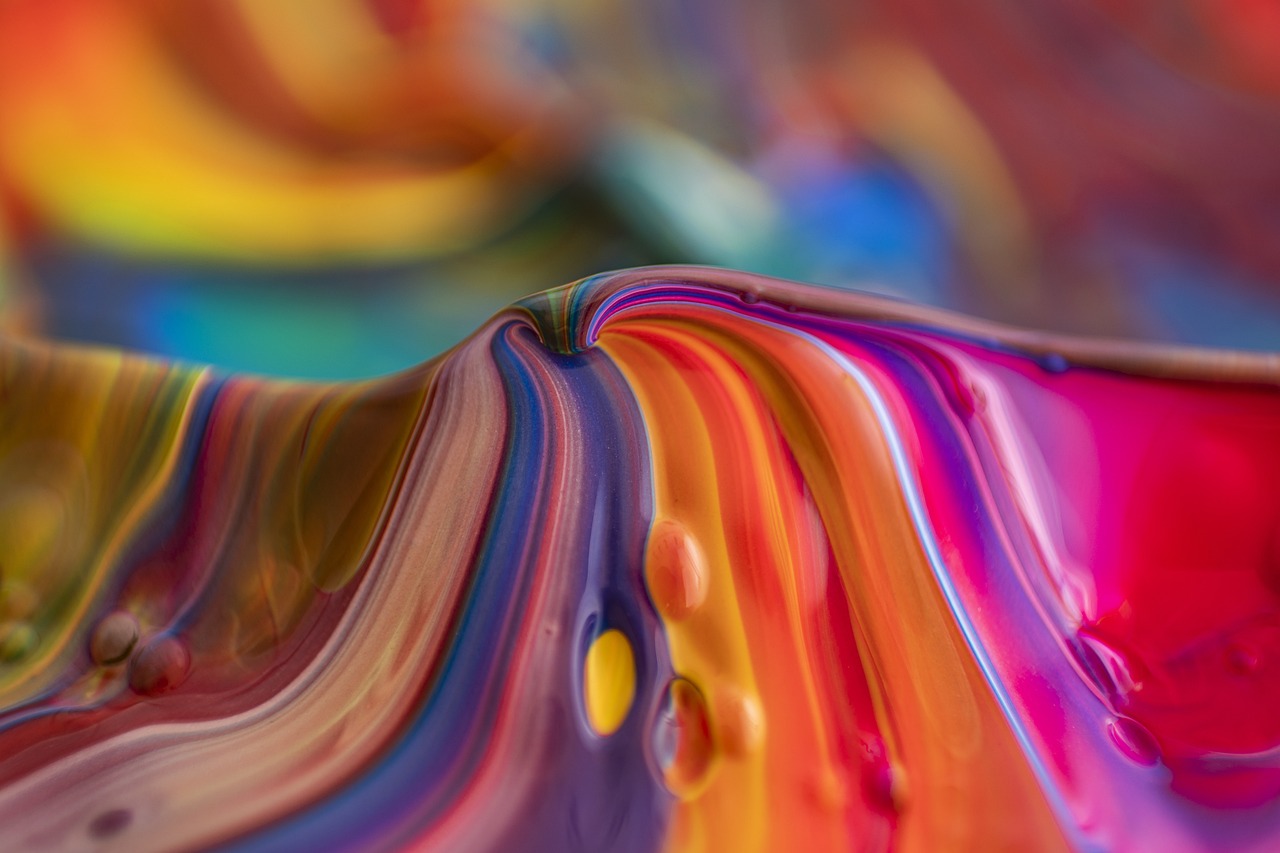
Understanding Gouache
Gouache is a fascinating medium that sits comfortably between watercolor and acrylic paint, offering artists a unique blend of both worlds. If you’ve ever marveled at the vibrant colors and opaque qualities of gouache, you’re not alone! This medium is cherished by many artists for its versatility and the stunning effects it can produce. Unlike traditional watercolors that allow the white of the paper to shine through, gouache is known for its opaque finish, which means it can completely cover underlying colors. This characteristic allows for bold, vivid artwork that can be easily layered and manipulated.
One of the most compelling features of gouache is its fast-drying nature. This means you can work quickly, layering colors without having to wait long periods for them to dry. It’s like having the best of both worlds; you get the fluidity of watercolor while enjoying the coverage of acrylics. Additionally, gouache can be reactivated with water even after it has dried, making it an excellent choice for artists who love to experiment and adjust their work without starting from scratch.
When diving into the world of gouache, you will discover its rich history. Originally used by artists for illustrations and design work, gouache has gained popularity among contemporary painters, illustrators, and hobbyists alike. Its ability to produce a wide range of effects—from soft washes to sharp, defined lines—makes it an exciting medium to explore. Whether you’re creating a detailed landscape or a whimsical character design, gouache opens the door to endless creative possibilities.
Another advantage of gouache is its color vibrancy. The pigments used in gouache are often more saturated compared to those in other mediums, allowing for striking and eye-catching artworks. Plus, the ease of mixing colors means you can create your own unique shades and tones. Imagine blending a few colors to achieve that perfect hue for a sunset or a serene ocean wave!
In summary, gouache is not just a paint; it’s a gateway to a world of creativity. Its unique properties, such as opacity, quick drying time, and vibrant colors, make it an ideal choice for both beginners and seasoned artists. As you embark on your gouache painting journey, embrace the learning curve and let your creativity flow. The beauty of gouache lies not only in the finished piece but also in the exploration and joy of the painting process itself.
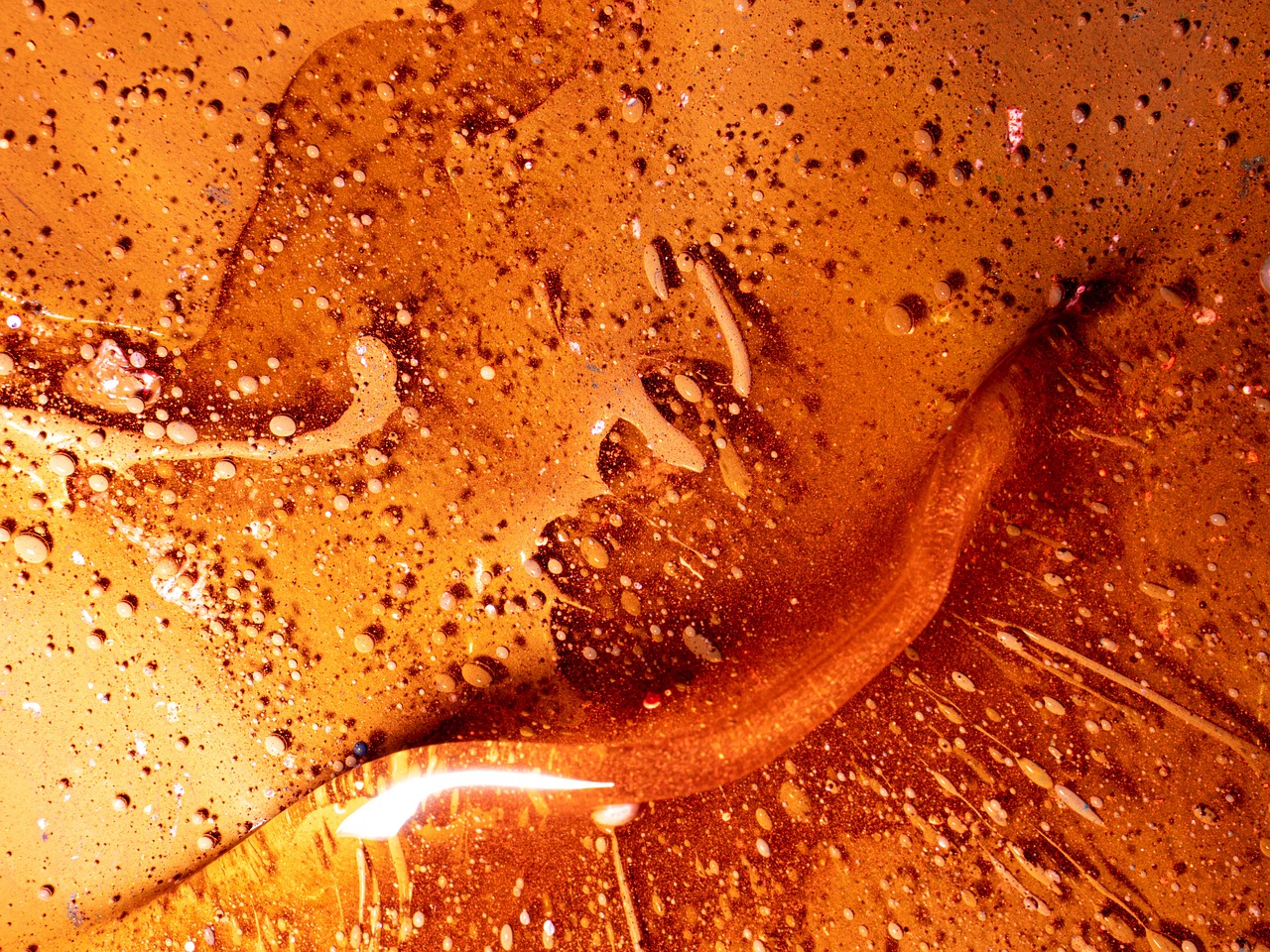
Essential Materials
Before diving into the vibrant world of gouache painting, it's essential to gather the right materials. Having the appropriate tools can significantly enhance your painting experience and help you achieve the stunning results you desire. Think of your materials as the ingredients in a recipe; the better the quality, the more delicious the outcome! In gouache painting, you'll primarily need paints, brushes, and paper, but let’s break down each component to ensure you’re well-equipped.
First and foremost, gouache paints are the star of the show. These opaque watercolors come in a variety of brands and colors, allowing you to create a wide spectrum of artwork. When selecting gouache, consider whether you want to invest in professional-grade paints or if student-grade options will suffice. Professional-grade paints typically offer higher pigment concentrations and better lightfastness, while student-grade paints can be more affordable and still provide satisfactory results for beginners.
Here’s a quick comparison of some popular gouache brands to help you make an informed decision:
| Brand | Type | Price Range | Best For |
|---|---|---|---|
| Winsor & Newton | Professional | $$$ | Serious artists |
| Holbein | Professional | $$$ | Vibrant colors |
| Liquitex | Student | $$ | Beginners |
| Reeves | Student | $ | Casual use |
Next up is brush selection. The type of brush you use can greatly affect your technique and the final look of your artwork. When painting with gouache, it's advisable to use synthetic brushes, as they hold up well to the thicker consistency of the paint. Look for a variety of shapes, including round, flat, and filbert, as each shape offers different possibilities for application. A good starting point is to have a few brushes in different sizes, allowing you to explore both detail work and broader strokes.
When choosing brushes, consider the following:
- Size: Smaller brushes for fine details and larger brushes for washes and backgrounds.
- Shape: Round brushes for detail, flat brushes for broad strokes, and filbert brushes for blending.
- Material: Synthetic brushes are usually more durable and suitable for gouache.
Finally, let’s talk about paper types. The surface you paint on can dramatically affect your final piece. Gouache works best on heavier paper that can withstand multiple layers of paint without warping. Look for watercolor paper or specially designed gouache paper, which often has a textured surface that helps to hold the paint. A weight of at least 200 gsm (grams per square meter) is recommended to ensure durability. You can also experiment with different textures to see how they influence your painting style.
Here’s a quick overview of some suitable paper types:
- Cold-pressed watercolor paper: Offers a textured surface ideal for layering.
- Hot-pressed watercolor paper: Smooth surface, perfect for detailed work.
- Gouache paper: Specifically designed for gouache, providing an optimal surface.
In conclusion, gathering the right materials is the first step toward creating beautiful gouache paintings. By investing in quality paints, brushes, and paper, you set yourself up for a rewarding artistic journey. So, are you ready to unleash your creativity with gouache?
Q1: Can I use regular watercolor paper for gouache?
A1: While you can use regular watercolor paper, it’s best to choose heavier paper (200 gsm or more) to prevent warping and ensure better paint adhesion.
Q2: What is the difference between student-grade and professional-grade gouache?
A2: Professional-grade gouache typically has higher pigment concentration and better lightfastness, while student-grade is more affordable and suitable for beginners.
Q3: How do I clean my brushes after using gouache?
A3: Clean your brushes with warm water and mild soap immediately after use to keep them in good condition and prevent paint from drying on the bristles.
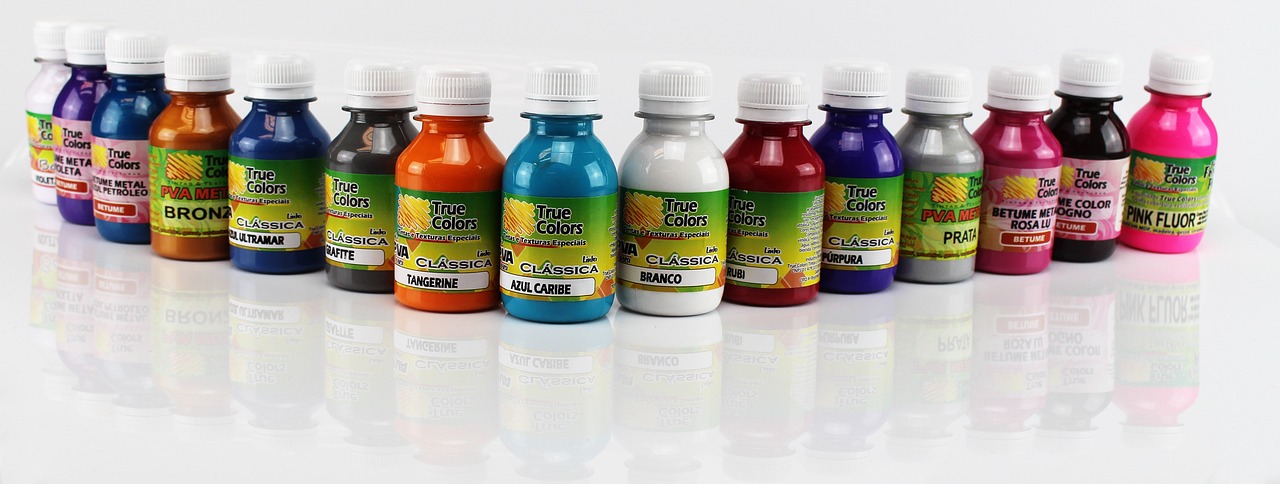
Choosing the Right Paint
When stepping into the vibrant world of gouache painting, one of the most important decisions you'll make is selecting the right paint. With a plethora of brands and formulations available, it can feel overwhelming, but fear not! Understanding the differences between various types of gouache paints will empower you to make informed choices that suit your artistic style and needs.
First, let’s talk about the two main categories of gouache: professional grade and student grade. Professional-grade gouache paints are often more pigmented and have a higher concentration of color, which means they offer better opacity and vibrancy. This quality can make a significant difference in your artwork, especially when layering colors. On the other hand, student-grade gouache is more affordable and can be a great option for beginners who are just starting to explore their artistic abilities. While it may not provide the same level of pigmentation, it still allows for creative expression without breaking the bank.
Another key factor to consider is the brand. Some of the most reputable brands in the gouache realm include Winsor & Newton, Holbein, and Schmincke. Each of these brands has its own unique formulation, which can affect the consistency and drying time of the paint. For example, Holbein's gouache is known for its creamy texture and vibrant colors, while Winsor & Newton offers a wide range of hues that are easy to mix. When choosing a brand, it’s beneficial to read reviews or watch tutorials to see how different paints perform in action.
Here’s a quick comparison table to help you understand the differences between some popular gouache brands:
| Brand | Professional Grade | Characteristics |
|---|---|---|
| Winsor & Newton | Yes | High pigmentation, smooth application |
| Holbein | Yes | Rich colors, creamy consistency |
| Arteza | No | Affordable, good for beginners |
| Liquitex | Yes | Heavy body, excellent coverage |
When selecting your gouache paints, it's also essential to think about the color palette you want to work with. A well-chosen palette can inspire creativity and streamline your painting process. Start with a basic set of primary colors—red, blue, and yellow—along with black and white. From there, you can mix and create an array of secondary and tertiary colors. As you grow more comfortable with gouache, you might want to expand your collection to include more specialized shades.
Finally, don't forget to consider the packaging. Gouache paints typically come in tubes or pans. Tubes offer more flexibility and are easier to mix, while pans are convenient for travel and quick setups. Depending on your painting habits, one option may be more suitable than the other. Ultimately, the right gouache paint will resonate with your artistic vision, allowing you to unleash your creativity and produce stunning works of art.

Professional vs. Student Grade
When diving into the vibrant world of gouache painting, one of the first decisions you’ll face is whether to opt for professional-grade or student-grade paints. Understanding the differences between these two categories can significantly impact your artistic journey and the quality of your finished artwork. So, what exactly sets them apart? Let's break it down!
Professional-grade gouache paints are formulated with high-quality pigments that offer superior lightfastness and vibrant colors. These paints are often more concentrated, allowing for better coverage and a more intense color payoff. Artists who rely on their work for exhibitions or sales will appreciate the longevity and richness these paints provide. However, this quality comes at a price, as professional-grade gouache can be significantly more expensive than its student-grade counterpart.
On the other hand, student-grade gouache is designed for beginners and those who are experimenting with the medium. These paints are generally more affordable and can be a great starting point for artists still honing their skills. While they may not have the same level of pigment concentration or lightfastness, they can still produce beautiful results, especially for practice and exploration. Many artists find that student-grade gouache allows them to play around with techniques without the fear of wasting expensive materials.
To help you visualize the differences, here’s a quick comparison:
| Feature | Professional Grade | Student Grade |
|---|---|---|
| Pigment Quality | High-quality, vibrant pigments | Lower-quality pigments, less vibrant |
| Lightfastness | Excellent lightfastness | Variable lightfastness |
| Price | Higher price point | More affordable |
| Best For | Professional artists and serious hobbyists | Beginners and casual artists |
Ultimately, the choice between professional and student-grade gouache will depend on your personal needs, budget, and artistic goals. If you're just starting out, student-grade gouache can be a fantastic way to explore your creativity without breaking the bank. However, as you develop your skills and gain confidence, investing in professional-grade paints might be the next step to elevate your artwork to new heights.

Brush Selection
When it comes to gouache painting, the choice of brush can significantly influence your creative experience and the final outcome of your artwork. Selecting the right brush is akin to choosing the right instrument in a band; each one has its own unique sound and purpose. In gouache painting, you’ll find a variety of brushes, each designed to help you achieve different effects and techniques. Generally, there are three main types of brushes you should consider: round, flat, and filbert.
Round brushes are fantastic for detailed work and fine lines. They allow for precision, making them ideal for intricate designs and small areas where you want to maintain control. On the other hand, flat brushes are excellent for broader strokes and filling in larger areas. They can create sharp edges and are perfect for laying down backgrounds or blocks of color. Filbert brushes, with their unique oval shape, combine the benefits of both round and flat brushes, making them versatile for various techniques, including blending.
When selecting brushes, consider the bristle type as well. Natural bristles, like those from sable or mongoose, offer a softness that glides smoothly over the paper, which is great for blending and creating soft edges. However, synthetic brushes have come a long way and can provide excellent durability and stiffness, making them suitable for heavy application and more textured effects. Here’s a quick comparison table to help you understand the differences:
| Brush Type | Best For | Bristle Type |
|---|---|---|
| Round | Detail work, fine lines | Natural or synthetic |
| Flat | Broad strokes, filling | Natural or synthetic |
| Filbert | Versatile techniques, blending | Natural or synthetic |
Additionally, the size of the brush matters. A range of sizes will allow you to tackle different areas of your artwork effectively. For instance, a small round brush can be your best friend for adding intricate details, while a larger flat brush can help you cover backgrounds quickly. It's also worth noting that as you progress in your gouache painting journey, you might find that experimenting with different brush types and sizes can lead to unexpected and exciting results.
Don't forget to consider the handle length as well. Short-handled brushes offer more control and are better for detailed work, while long-handled brushes can provide a broader stroke and are useful when working on larger canvases. Ultimately, the best brush is the one that feels comfortable in your hand and suits your painting style.
In conclusion, brush selection is a fundamental aspect of gouache painting that can greatly affect your artistic expression. Take the time to explore various brushes, and don't hesitate to invest in a few different types. Remember, the right brush can be the difference between a good painting and a great one!
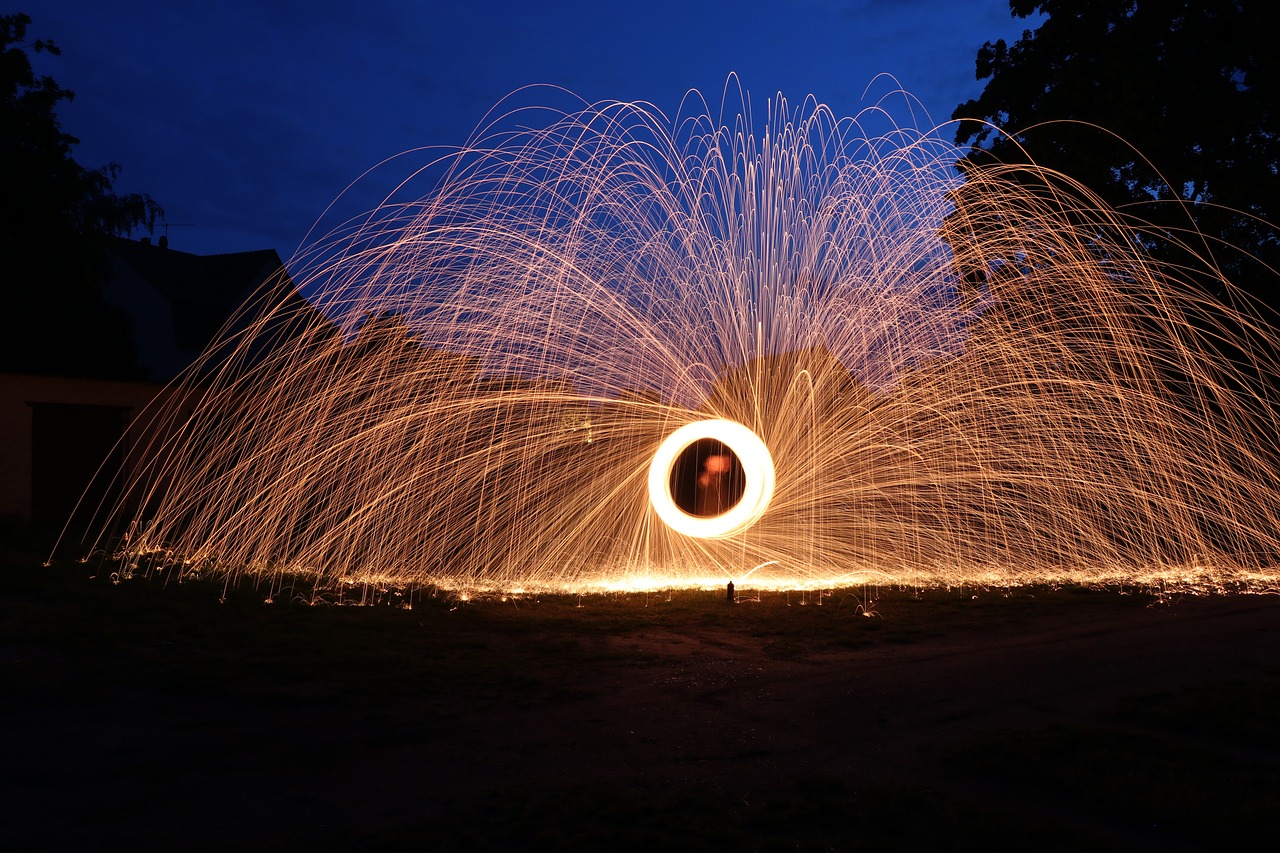
Paper Types for Gouache
Choosing the right paper for gouache painting is crucial for achieving the desired effects and ensuring that your artwork stands the test of time. Unlike watercolors, which require specific types of paper to handle water absorption, gouache is more forgiving. However, the texture and weight of the paper can significantly influence your painting experience and the final result. Generally, gouache works best on heavier papers that can withstand multiple layers of paint without warping or tearing.
When selecting paper for gouache, you'll encounter a variety of options, each with its unique characteristics. Here are some of the most common types:
- Cold Pressed (Not) Paper: This paper has a textured surface that allows for rich color application and blending. It’s ideal for those who enjoy expressive brush strokes and layering techniques.
- Hot Pressed (Smooth) Paper: If you prefer a smoother finish, hot pressed paper is the way to go. It allows for precise detail work and is excellent for glazing techniques.
- Watercolor Paper: While traditionally used for watercolors, high-quality watercolor paper can also be a great choice for gouache. Look for 300 lb (640 gsm) paper to prevent buckling.
- Mixed Media Paper: This versatile option can handle various mediums, including gouache. It typically has a moderate texture that balances between smooth and rough surfaces.
Each of these paper types has its advantages, and your choice will depend on your personal style and the techniques you wish to employ. For instance, if you love to create soft transitions and gradients, cold pressed paper might be your best bet. On the other hand, if you enjoy fine details and crisp lines, hot pressed paper could be your go-to.
In addition to texture, consider the weight of the paper. Heavier papers (around 200 lb or 425 gsm) are less likely to buckle when wet, allowing you to apply multiple layers without concern. If you're working on lighter papers, be prepared to use less water to avoid warping. Ultimately, experimenting with different types of paper will help you discover what works best for your artistic vision.
Q: Can I use regular drawing paper for gouache?
A: While you can use regular drawing paper, it may not hold up well to the water content in gouache. It could warp or tear, especially with multiple layers. It's best to stick with heavier, more absorbent papers.
Q: Is it necessary to stretch my paper before painting with gouache?
A: Stretching is generally not necessary for gouache, especially if you're using heavier paper. However, if you're working on lighter paper and plan to use a lot of water, stretching can help prevent buckling.
Q: Can I use gouache on canvas?
A: Yes, you can use gouache on canvas, but it’s important to prepare the canvas properly. A primed canvas will provide a better surface for gouache, allowing for easier blending and layering.
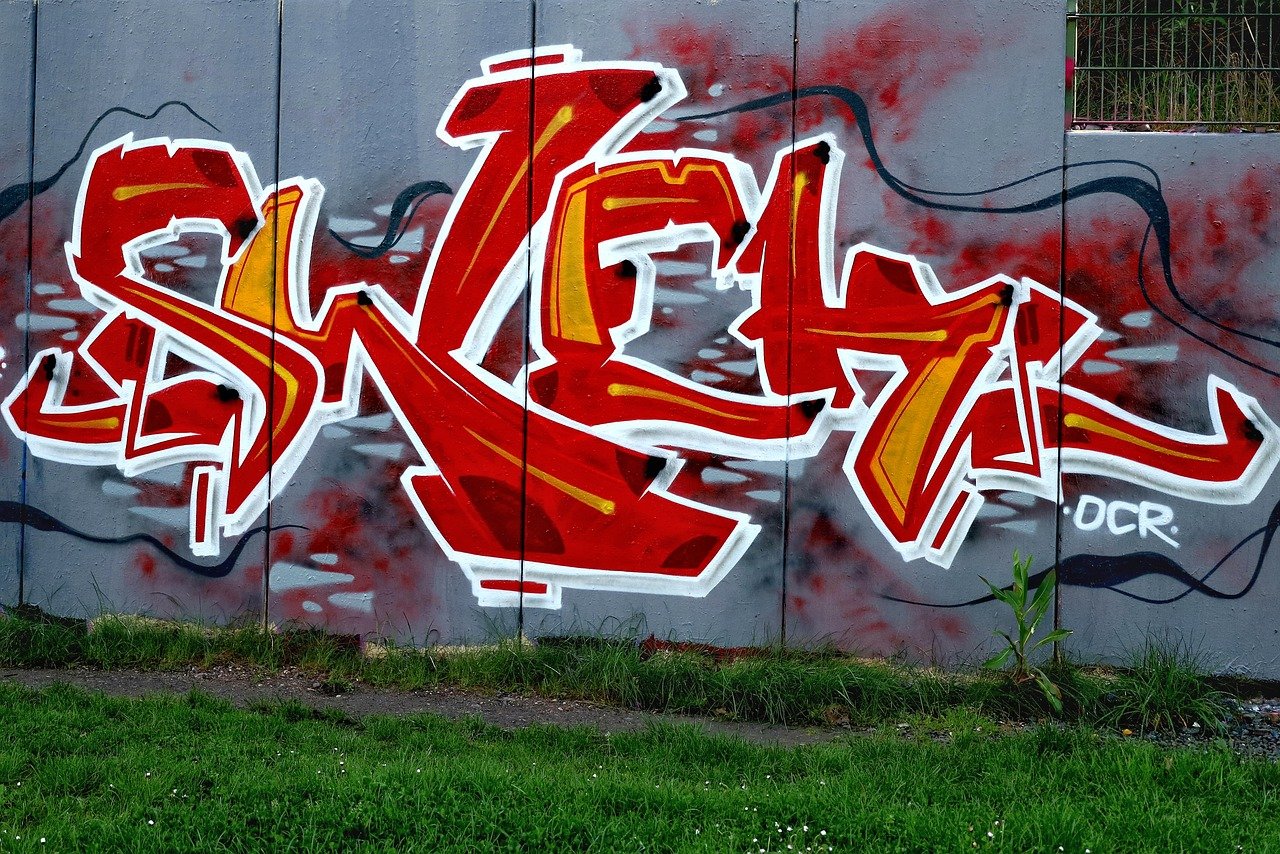
Basic Techniques
Mastering foundational techniques is key to successful gouache painting. Think of these techniques as the building blocks of your artistic journey, allowing you to express your creativity in vibrant colors and textures. Whether you're a complete novice or someone looking to refine your skills, understanding these methods will help you unlock the full potential of gouache. Let’s dive into some essential techniques that will elevate your work from basic to breathtaking!
One of the most fundamental techniques in gouache painting is layering. This method involves applying multiple layers of paint to create depth and dimension in your artwork. Imagine building a sandwich—each layer adds flavor and substance. In gouache, you can start with a light base layer and gradually add darker hues on top, allowing the lighter colors to shine through. This technique not only enhances the visual appeal but also gives your work a sense of richness and complexity.
To effectively layer, ensure that each layer dries completely before adding the next. This prevents the colors from muddying and allows for a more vibrant finish. As you practice, experiment with the thickness of your layers; thinner applications can create a translucent effect, while thicker layers provide opacity. You can also incorporate other techniques, like glazing, to further enhance your art. Glazing involves applying a thin, transparent layer of color over a dry base layer, which can modify the underlying color and add depth without losing the vibrancy of the original hues.
Another crucial technique is blending. Blending allows you to create smooth transitions between colors, giving your painting a polished and cohesive look. To blend effectively, work with wet paint and use a soft brush to gently mix colors on the canvas. This is similar to mixing ingredients in a recipe; the goal is to achieve a harmonious result without any harsh lines. You might find it helpful to practice blending on a scrap piece of paper before applying it to your actual artwork. Remember, the key to great blending is patience and a gentle touch.
Additionally, glazing can be a game-changer in your gouache painting repertoire. This technique involves applying a thin, transparent layer of paint over a dry layer. It allows you to alter the color beneath without completely covering it, similar to how a colored filter can change the light passing through it. By using glazing, you can create luminous effects and enhance the overall mood of your piece. For instance, a warm glaze over a cool base can create a stunning sunset effect, making your artwork come alive.
As you explore these techniques, don’t forget the importance of practice. Like any skill, the more you paint, the better you’ll become. Set aside time to experiment with different methods, colors, and styles. Try creating small studies focusing solely on layering or blending. This focused practice will help you gain confidence and discover what works best for you. Remember, every artist has their unique style, and experimentation is key to finding yours.
To wrap it up, gouache painting offers a world of possibilities through its basic techniques. Layering, blending, and glazing are just the tip of the iceberg. As you dive deeper into your gouache journey, keep these techniques in mind and let your creativity flow. Each brushstroke is a step on your artistic path, so embrace the process and enjoy the vibrant journey ahead!
Here are some common questions beginners have about gouache painting:
- What is gouache? Gouache is a water-based paint that offers both the transparency of watercolor and the opacity of acrylics.
- Can I mix gouache with other mediums? Yes, gouache can be mixed with watercolors and acrylics, but it's best to experiment to see how they interact.
- How do I clean my brushes after using gouache? Clean your brushes with water immediately after use to prevent the paint from drying and damaging the bristles.
- Can I use gouache on canvas? While gouache is typically used on paper, you can use it on canvas as long as you prepare the surface properly.
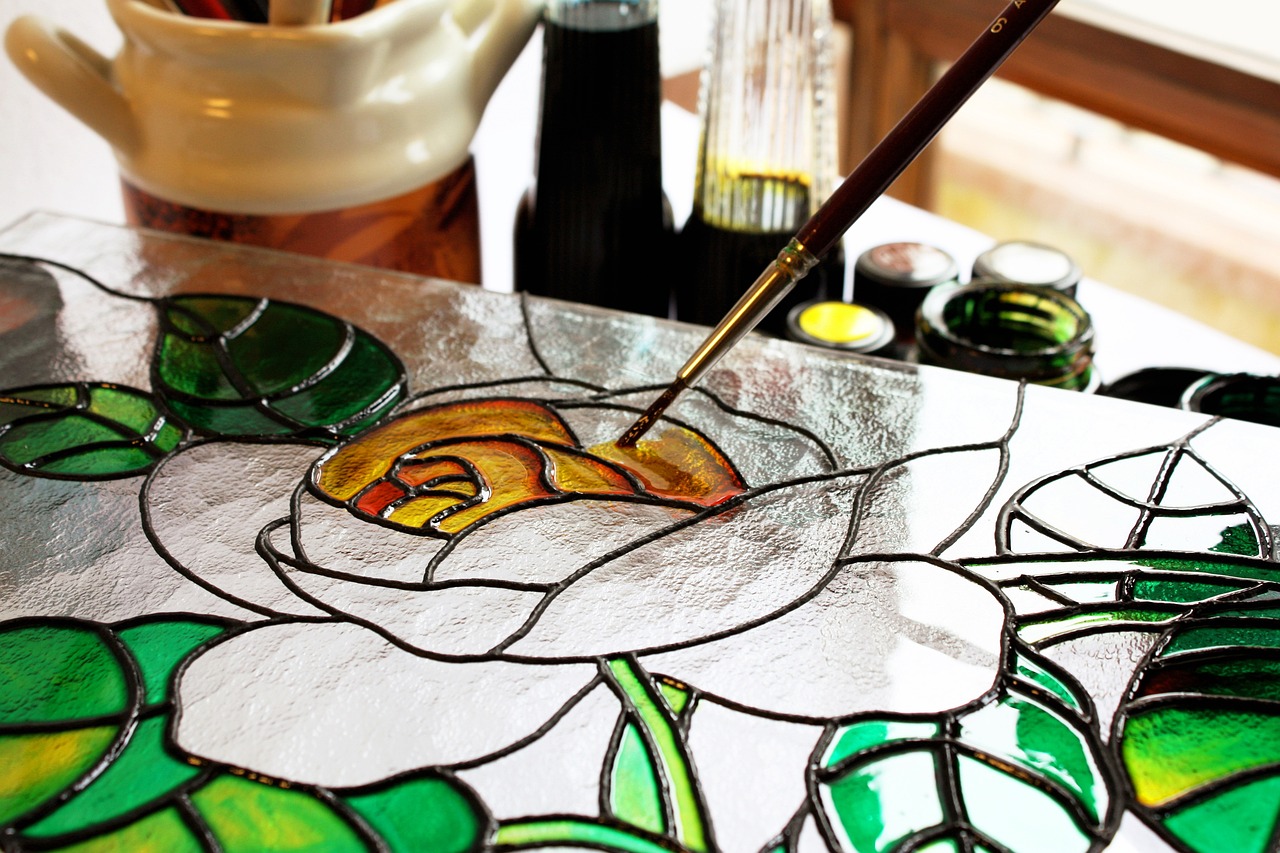
Layering Techniques
Layering is a fundamental technique in gouache painting that allows artists to create depth and richness in their artwork. Imagine building a beautiful cake; each layer adds flavor and texture, making the final product more enticing. Similarly, in gouache, layering involves applying multiple coats of paint to achieve a desired effect, whether it be a soft gradient or a bold, vibrant finish. To master this technique, it's essential to understand how to apply layers effectively without disturbing the ones beneath.
To begin layering, start with a solid base layer. This initial layer sets the tone for your painting and can be a lighter color that will serve as a foundation. Once this layer dries, you can build upon it with darker or more saturated colors. One of the great advantages of gouache is its quick drying time, which allows artists to work efficiently without long waits between layers. However, patience is still key; allow each layer to dry completely before adding the next to avoid muddying your colors.
When layering, consider the following tips to enhance your technique:
- Transparency: Gouache is known for its opacity, but you can also use it transparently. Mixing a bit of water with your paint can create a translucent layer that allows the colors underneath to show through, adding complexity to your work.
- Texture: Experiment with different brush strokes and techniques. A dry brush technique can create a textured effect, while a wet-on-wet approach can result in smoother transitions.
- Color Mixing: Layering isn’t just about applying different colors; it’s also about mixing them. Try layering complementary colors to see how they interact and create new shades.
As you become more comfortable with layering, don’t hesitate to experiment. Use a palette knife to apply thick layers for a more impasto effect, or try sponging for a unique texture. The beauty of gouache lies in its versatility, so let your creativity flow!
In conclusion, mastering layering techniques in gouache painting opens up a world of possibilities. By learning to build layers effectively, you can create stunning compositions that are rich in color and texture. Remember, practice is key, so keep experimenting and have fun with your gouache journey!
Q: How long does gouache take to dry?
A: Gouache typically dries quickly, usually within 15 to 30 minutes depending on the thickness of the application and environmental conditions. However, it's always best to wait until each layer is completely dry before adding the next.
Q: Can I rework dried gouache?
A: Yes! One of the great features of gouache is that it can be reactivated with water. This means you can easily adjust and rework areas of your painting if you’re not satisfied with them.
Q: What should I do if my colors look muddy?
A: Muddy colors often result from overmixing or applying too many layers without allowing them to dry. To avoid this, use a light touch and apply layers gradually, allowing each to dry before moving on.
Q: Is gouache suitable for beginners?
A: Absolutely! Gouache is a forgiving medium that is perfect for beginners. Its vibrant colors and ease of use make it an excellent choice for those just starting their artistic journey.
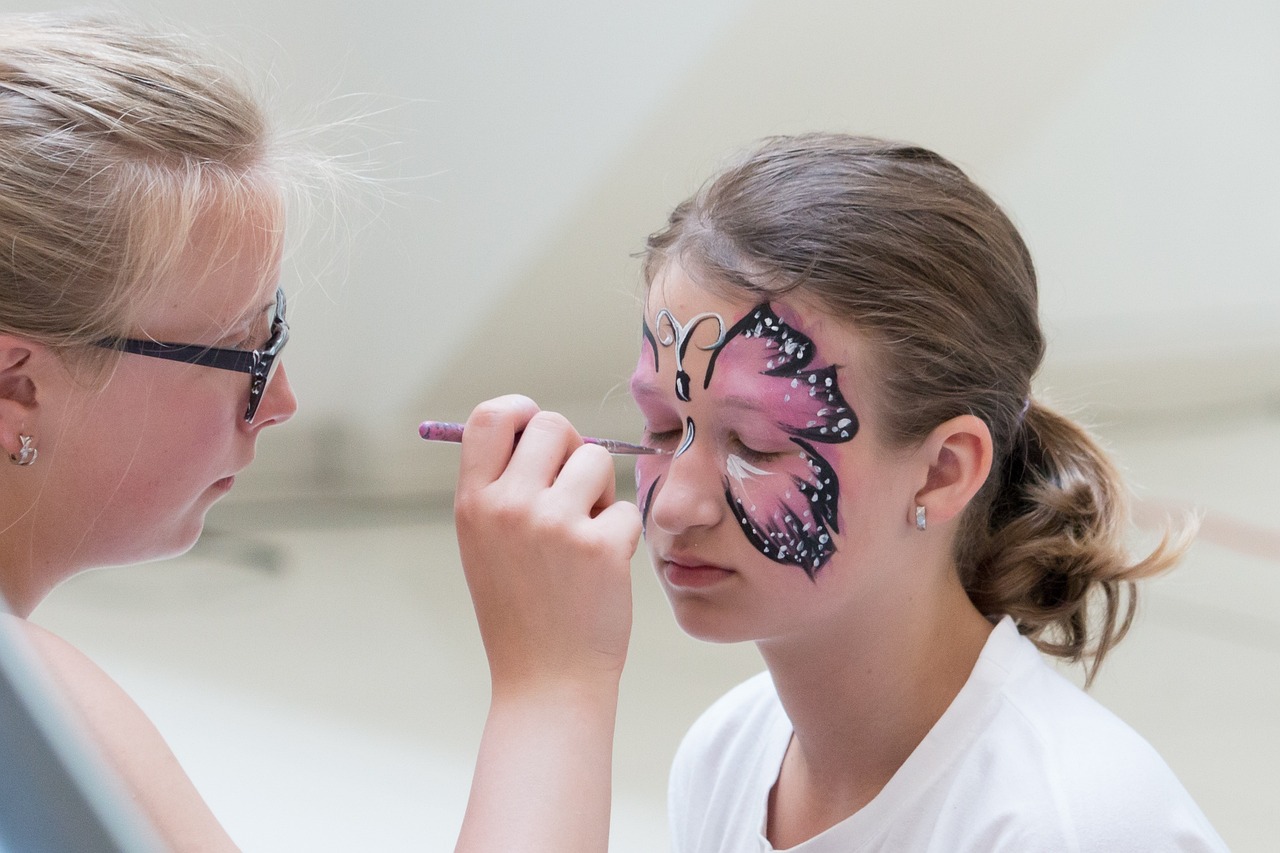
Blending and Glazing
Blending and glazing are two of the most exciting techniques in gouache painting that can elevate your artwork to a whole new level. Imagine standing in front of a canvas, your palette filled with vibrant colors, and the ability to create a smooth transition between shades that looks almost magical. This is the power of blending! When you blend, you're essentially mixing colors directly on the canvas or on your palette, allowing for a seamless flow between tones. It’s like watching a sunset where the colors gradually shift from bright orange to deep purple.
To get started with blending, you'll want to use a wet brush. A damp brush will help you merge colors without creating harsh lines. Start by applying a base color and then, while it’s still wet, gently brush in another color at the edge. The key here is to use soft strokes; think of it as if you're softly whispering to the paint, coaxing it to mingle. You can achieve different effects by varying the pressure on your brush or the amount of water you use. Remember, practice makes perfect! Don’t be afraid to experiment with different color combinations.
Now, let's dive into glazing. Glazing is like adding a sheer veil of color over another layer. It allows you to modify the tone and depth of your painting without losing the underlying details. The beauty of glazing lies in its transparency; it’s akin to placing a colored filter over a light source. For glazing, you’ll want to use a thinner mixture of gouache with more water. This diluted paint can then be brushed over dry layers to create depth and luminosity. Think of it like adding layers to a cake; each layer adds flavor and complexity to the final product.
Here’s a quick tip: when glazing, always start with lighter colors and gradually build up to darker ones. This approach helps maintain the vibrancy of your painting. If you apply a dark glaze first, it can overpower the lighter colors beneath. A great way to practice this technique is by using a color wheel to understand how colors interact with each other. You can create a simple chart that shows how different glazes affect the base colors. This not only helps in visualizing the effects but also serves as a handy reference for future projects.
In summary, mastering blending and glazing can transform your gouache paintings from simple illustrations into captivating works of art. These techniques allow you to play with light, shadow, and color in ways that can truly bring your vision to life. So grab your brushes, mix those colors, and let your creativity flow!
- What is the difference between blending and glazing?
Blending involves mixing colors to create smooth transitions, while glazing is applying a transparent layer of color over a dry layer to modify its appearance. - Can I use blending and glazing with other mediums?
Yes, both techniques can be adapted for use with other mediums like acrylics and oils, though the methods may vary slightly. - How do I know when to blend or glaze?
Use blending when you want to create seamless transitions and glazing when you want to enhance depth or modify colors without losing detail.
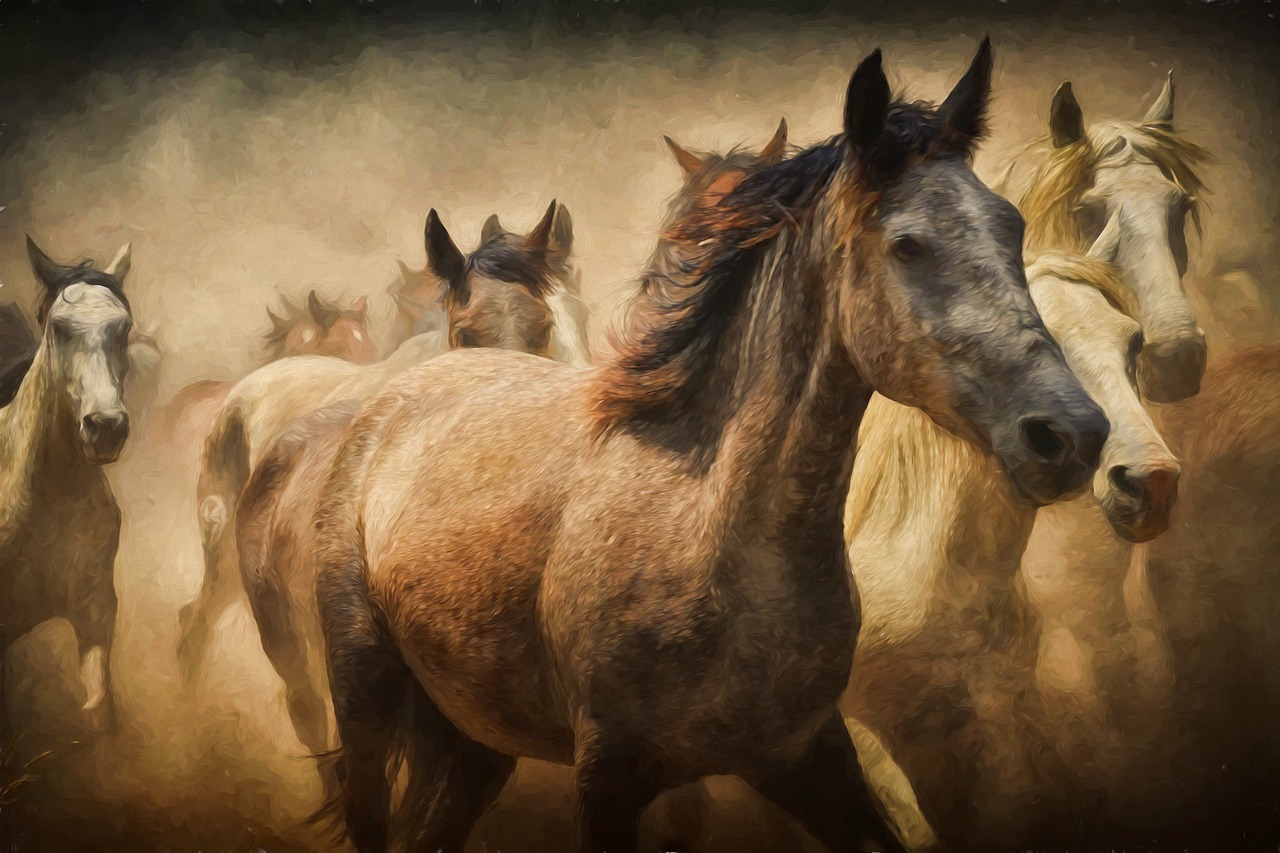
Tips for Beginners
Starting your journey into the vibrant world of gouache painting can be both thrilling and intimidating. As a beginner, it's essential to arm yourself with practical tips that can help you navigate through the initial challenges. One of the best pieces of advice is to embrace your mistakes. Every artist has been there, and each error is a stepping stone to improvement. Remember, even the most seasoned artists were once beginners, and they learned through trial and error. So, don’t be afraid to make a mess; it’s part of the creative process!
Another crucial tip is to practice regularly. Just like any skill, painting improves with consistent practice. Set aside a specific time each week to paint, even if it's just for a short session. This will help you build muscle memory and develop your unique style. Try experimenting with different techniques and subjects to discover what resonates with you. Perhaps you’ll find joy in landscapes one day and abstract forms the next!
Additionally, experimenting with color can lead to delightful surprises. Gouache is known for its vibrant color palette, so don’t shy away from mixing colors to create your own unique shades. Keep a color journal where you can jot down your favorite mixes and the ratios used. This way, you'll have a reference for future projects. Remember, color theory is your friend, and understanding how colors interact can take your artwork to the next level.
It's also important to have the right mindset. Approach each painting session with a sense of curiosity and playfulness. Art is not just about the end result; it’s about the journey and the joy of creating. So, if a piece doesn’t turn out as you envisioned, instead of feeling discouraged, ask yourself what you can learn from it. This mindset will not only improve your skills but also enhance your overall enjoyment of the process.
Lastly, consider joining a community of fellow artists. Whether it’s an online forum, a local art class, or social media groups, connecting with others can provide invaluable support and inspiration. Sharing your work and receiving feedback can help you grow, and you might even discover new techniques or tips from others. Remember, art is meant to be shared, and the connections you make can enrich your experience.
As you embark on your gouache painting journey, being aware of common mistakes can save you time and frustration. One frequent pitfall is using too much water, which can dilute the rich pigments of gouache and lead to a washed-out effect. Instead, focus on using a balanced amount of water to maintain the paint's vibrancy. Additionally, many beginners tend to rush their drying time, leading to smudges and unintended blends. Give your layers time to dry before applying additional paint; this will help preserve your intended design.
Lastly, don’t forget to clean your brushes properly. Gouache can dry quickly, and if you leave paint in your brushes, it can ruin them. Always rinse your brushes thoroughly after each session and reshape the bristles to maintain their form. By avoiding these common mistakes, you’ll find your gouache painting experience more enjoyable and productive.
| Question | Answer |
|---|---|
| Can I mix gouache with watercolor? | Yes, you can mix gouache with watercolor, but be mindful that gouache is more opaque, which may alter the transparency of your watercolor paints. |
| How do I store my gouache paints? | Store gouache paints in a cool, dry place. Ensure the lids are tightly closed to prevent them from drying out. |
| What is the best way to clean gouache off my brushes? | Use warm, soapy water to clean your brushes after each use. Rinse thoroughly and reshape the bristles. |
| Is gouache suitable for beginners? | Absolutely! Gouache is user-friendly and forgiving, making it an excellent choice for beginners. |
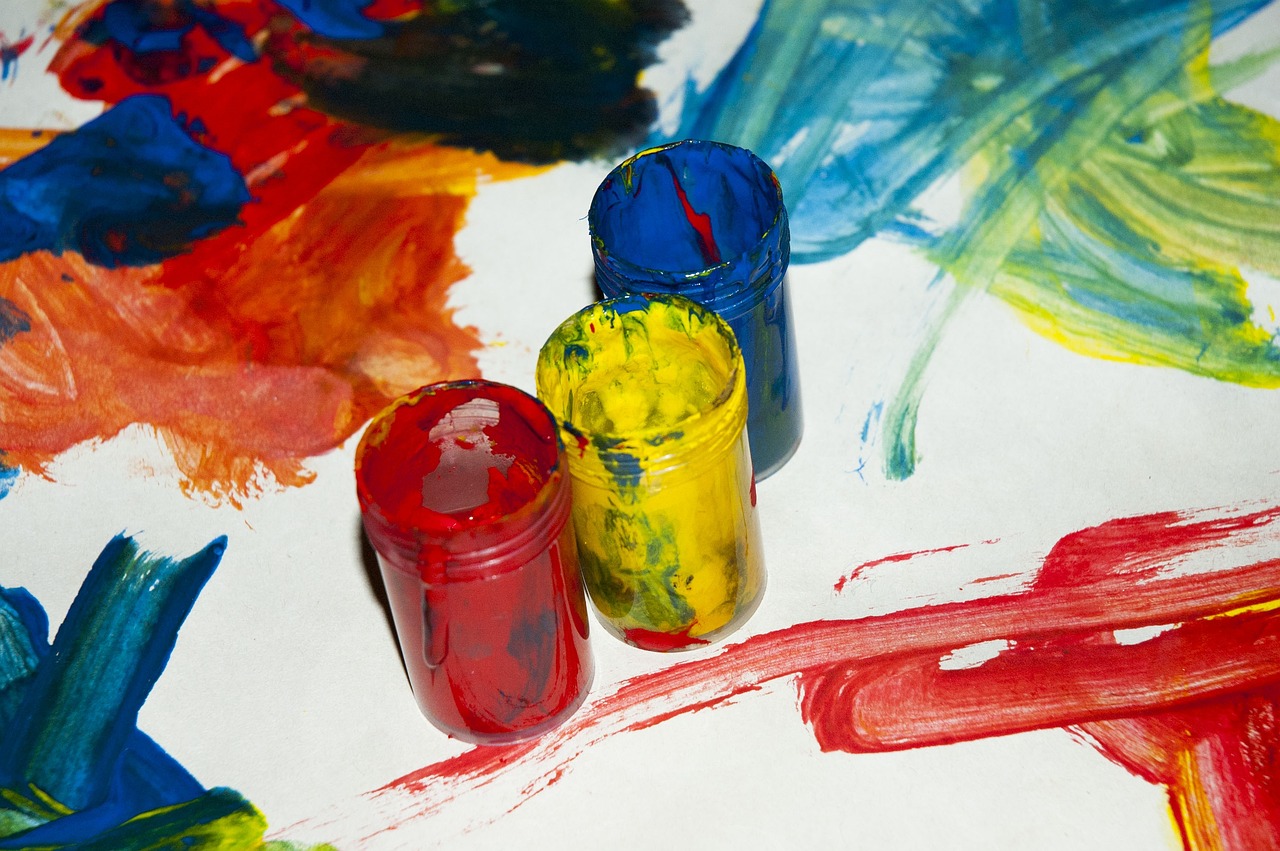
Common Mistakes to Avoid
As you embark on your gouache painting journey, it’s essential to be aware of common mistakes that can hinder your progress and creativity. One of the biggest pitfalls beginners face is overworking the paint. Gouache is a unique medium that dries quickly, and continuously layering or reworking areas can lead to a muddy appearance. Instead, try to embrace the beauty of the medium by allowing certain sections to dry before adding more detail. This not only helps maintain vibrancy but also gives your artwork a more polished look.
Another prevalent mistake is using the wrong type of paper. Gouache is best suited for heavier papers that can absorb the moisture without warping. If you opt for lightweight or standard sketch paper, you may find that your colors bleed or the surface deteriorates. Investing in a good quality watercolor paper can make a significant difference in the final outcome of your work.
Additionally, many beginners tend to squeeze out too much paint, leading to unnecessary waste. Gouache is quite pigmented, and a little goes a long way. Start with small amounts and add more as needed. This not only saves your materials but also encourages you to be more deliberate with your color mixing and application.
Don’t forget to pay attention to your brushwork. Using the wrong brush or applying too much pressure can result in unwanted textures or streaks. Choose brushes that suit your desired technique, whether it’s a flat brush for broad strokes or a finer brush for intricate details. Experimenting with different brush types can yield exciting results and help you discover your personal style.
Lastly, remember that gouache can be reactivated with water, which is both a blessing and a curse. While it allows for easy corrections, it can also lead to frustration if you don't let layers dry completely before applying new ones. Always be mindful of this characteristic, and consider using a spray bottle to lightly mist your palette if you need to keep the paint workable.
As you dive deeper into gouache painting, you may have some lingering questions. Here are a few frequently asked questions that can help clarify your understanding:
- Can I mix gouache with other mediums? Yes, gouache can be mixed with watercolor and acrylics, but it’s best to experiment to see how they interact.
- How do I store leftover gouache paint? Store it in an airtight container in the refrigerator to prolong its shelf life.
- Is gouache permanent once dry? While gouache is water-resistant when dry, it is not completely permanent like acrylic paint. Be cautious when framing or displaying your work.
- Can I use gouache on canvas? Yes, but make sure to prime the canvas properly to prevent absorption issues.

Experimentation and Practice
When it comes to gouache painting, experimentation and practice are your best friends. Just like a chef who tries new ingredients to create the perfect dish, artists need to step out of their comfort zones to discover their unique style. Gouache is incredibly forgiving, allowing you to layer, mix, and even erase without the fear of ruining your work. So, why not dive in and start mixing those vibrant colors?
One of the most exciting aspects of gouache is its versatility. You can use it to create everything from detailed illustrations to bold abstract pieces. Don't be afraid to try different techniques and see what resonates with you. For instance, you might find that layering colors creates depth in your work, while blending can produce a smooth transition that adds a touch of elegance. The key is to experiment with these methods and see how they can enhance your artistic expression.
As you embark on your gouache journey, consider setting aside dedicated time for practice. This doesn’t have to be a chore; think of it as a fun opportunity to explore your creativity. You could even create a series of small pieces focusing on different techniques—like a mini-exhibition of your progress. Over time, you’ll notice improvements in your skills and confidence, which will reflect in your artwork.
Here are a few ideas to spark your experimentation:
- Color Mixing: Try mixing complementary colors to see how they interact. You might stumble upon a beautiful shade that becomes your signature!
- Texture Techniques: Experiment with different tools, like sponges or palette knives, to create unique textures in your paintings.
- Subject Variety: Paint a variety of subjects, from still life to landscapes, to challenge your skills and discover what you enjoy the most.
Remember, the journey of an artist is paved with mistakes and learning experiences. Don’t shy away from making errors; instead, embrace them as part of the process. Each mistake is an opportunity to learn something new. Keep a sketchbook handy to jot down your thoughts, techniques you enjoyed, or even color combinations that caught your eye. This will not only serve as a great reference but also keep your creative juices flowing.
Lastly, consider joining a community of gouache enthusiasts. Whether it’s an online forum or a local art class, sharing your experiences and learning from others can provide valuable insights and inspiration. You’ll find that many artists are eager to share their tips, tricks, and techniques, fostering an environment of growth and creativity.
Q1: How long does gouache take to dry?
A1: Gouache typically dries quickly, often within 15 to 30 minutes, depending on the thickness of the paint and the environment. However, it can remain workable for longer if you keep it moist.
Q2: Can I use gouache on canvas?
A2: Yes! While gouache is commonly used on paper, it can also be applied to canvas. Just make sure to prepare the canvas properly to ensure the best adhesion.
Q3: Do I need to use water with gouache?
A3: Yes, water is essential for mixing and applying gouache. The amount of water you use will affect the transparency and flow of the paint, so experiment to find what works best for you.
Q4: How do I preserve my gouache paintings?
A4: Once your painting is dry, you can use a fixative spray to help protect it. Additionally, storing your artwork in a cool, dry place away from direct sunlight will help maintain its vibrancy.
Q5: Can I layer gouache over acrylic paint?
A5: Yes, you can layer gouache over acrylic paint. Just ensure the acrylic layer is completely dry before applying gouache on top.
Frequently Asked Questions
- What is gouache and how is it different from watercolor?
Gouache is a unique painting medium that combines the transparency of watercolor with the opacity of acrylic. Unlike watercolor, which can be transparent and layered, gouache is designed to be more opaque, allowing for vibrant colors that can be painted over one another without losing intensity. This makes gouache an excellent choice for artists looking to create bold, expressive works.
- What materials do I need to start painting with gouache?
To get started with gouache, you'll need a few essential materials: gouache paints, a set of brushes (preferably synthetic for better water resistance), and suitable paper. Additionally, a palette for mixing colors, a water container, and paper towels for cleaning brushes are also helpful. Investing in quality materials can significantly enhance your painting experience!
- Can I use regular watercolor paper for gouache painting?
While you can use watercolor paper for gouache, it's best to choose a heavier weight paper that can handle the additional water and pigment. Look for cold-pressed or hot-pressed watercolor paper, as these options provide a sturdy surface for layering and blending techniques, ensuring your artwork remains intact without warping.
- How do I choose the right gouache paint?
When selecting gouache paint, consider the brand and type. Professional-grade gouache offers higher pigment concentrations and better lightfastness, making it ideal for serious artists. Student-grade gouache is more affordable and can be a good choice for beginners. Experimenting with different brands can help you find the perfect match for your style and budget!
- What are some common mistakes beginners make with gouache?
One common mistake is using too much water, which can dilute the paint and reduce opacity. Another is not allowing layers to dry properly before applying additional paint, leading to muddy colors. Lastly, beginners often overlook the importance of using the right brush for their techniques, which can affect the final outcome of their artwork.
- How can I improve my gouache painting skills?
Improving your gouache skills requires practice and experimentation. Try different techniques like layering, blending, and glazing to see what works best for you. Don't be afraid to make mistakes—each one is a learning opportunity! Additionally, studying the works of other gouache artists can inspire and guide your own artistic journey.
- Is gouache suitable for all types of painting styles?
Absolutely! Gouache is incredibly versatile and can be used for various styles, from detailed illustrations to bold, abstract pieces. Its unique properties allow artists to create a wide range of effects, making it suitable for both traditional and modern artistic expressions. So, whether you're into realism or something more experimental, gouache can be your go-to medium!



















